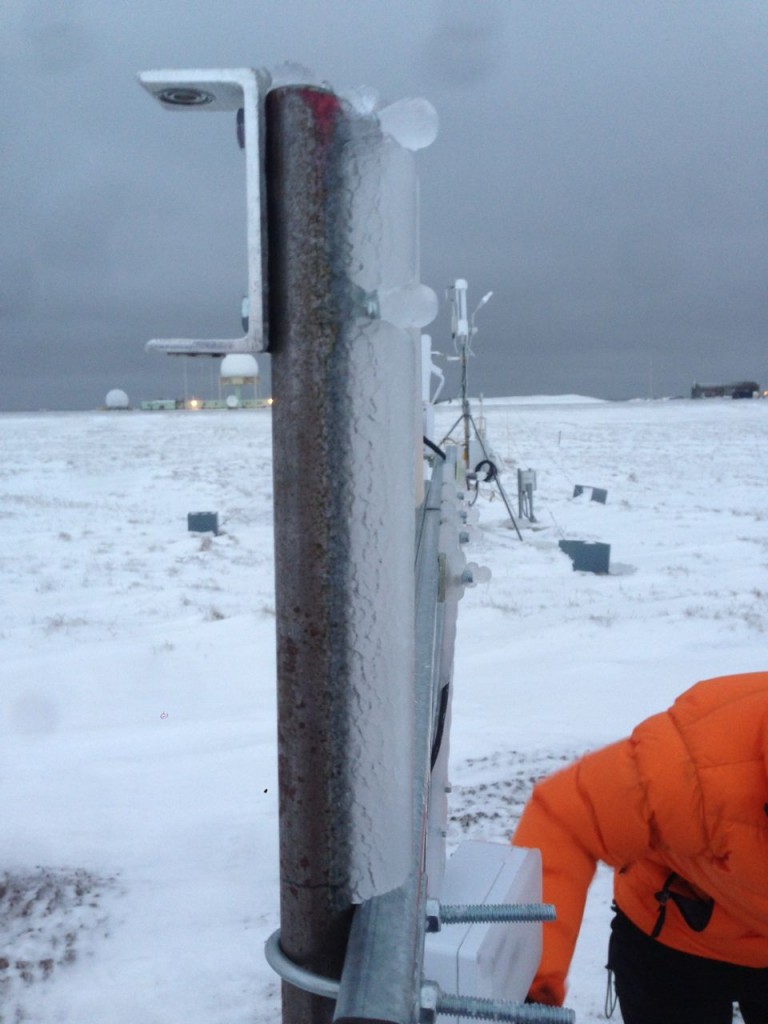For the last few days, I’ve been saying that Tuesday was not going to be a good day for flying, and that came true. With high winds and no icing, we can try to fly, and with icing conditions and low winds, we’re happy to test our equipment. But when there are high winds (~25 mph) and accumulating ice fog – forget about it. In some ways, no-fly days like this are good to have, as they provide us with a chance to go through our data, work on writing software to perform data analysis, and catch up on all of the other work that takes a backseat during the campaign. Just as importantly, it gives us a chance to do normal things like laundry – at two workouts per day, all I can say is that my gear was ready to be washed!
Now, about that ice fog – it really does a number on your instruments. We had left our weather vane sitting out on the tripod overnight to gather an extended dataset, but this morning, none of the measurements were making any sense. When we went out to inspect the vane, we realized why this was. The entire thing was coated in quite a bit of ice! The pitot tube was completely clogged, the cold-wire sensor shroud was totally iced over, the thermopile sensors were covered, and the accumulation of ice all over the vane body had thrown off the balance of the device. This instrument was never specifically designed for Arctic operation but seeing it coated in ice does provide a stark reminder of the challenges faced when trying to make measurements up here!
The winds should back off by tomorrow afternoon and we’ll be ready to go at that point to fly as many hours as we can in our few remaining days up here.





